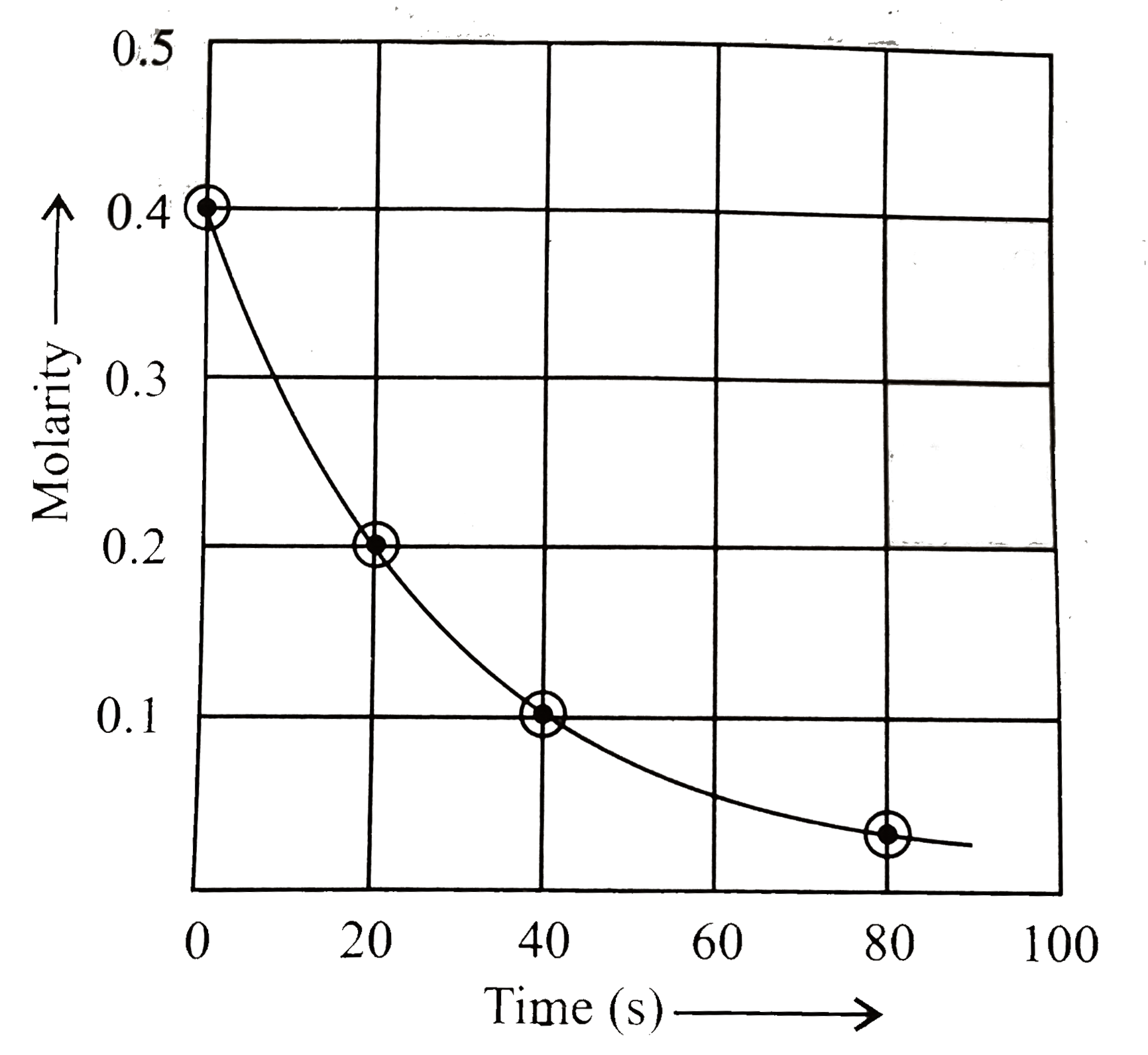For a reaction aA+bB⇔cC+dD at equilibrium Gθ=0 always .
The correct Answer is:False
Topper's Solved these Questions
- BOOK - CBSE COMPLEMENTARY MATERIALCHAPTER - EQUILIBRIUM EXERCISE - FILL IN THE BLANKS10videos
EQUILIBRIUM
- BOOK - CBSE COMPLEMENTARY MATERIALCHAPTER - EQUILIBRIUM EXERCISE - MATCH THE COLUMNS2videos
EQUILIBRIUM
- BOOK - CBSE COMPLEMENTARY MATERIALCHAPTER - EQUILIBRIUM EXERCISE - UNIT TEST6videos
EQUILIBRIUM
- BOOK - CBSE COMPLEMENTARY MATERIALCHAPTER - ENVIRONMENTAL CHEMISTRYEXERCISE - UNIT TEST9videos
ENVIRONMENTAL CHEMISTRY
- BOOK - CBSE COMPLEMENTARY MATERIALCHAPTER - HYDROCARBONSEXERCISE - UNIT TEST16videos
HYDROCARBONS
Similar Questions
For a general reaction, aA+bB⇔cC+dD,
equilibrium constant Kc is given by Kc=[C]c[D]d[A]a[B]b.
However, when all reactants and products are gases the equilibrium constant is generally expressed in terms of partial pressure.
Kp=PcC×PdDPaA×PbB
In which of the following equilibrium will shift forward on addition of inert gas at constant pressure ?View SolutionRead the following paragraph and answer the questions given below,
for a general reaction, aA+bB⇔cC+dD, equilibrium constant Kc is given by Kc=[C]c[D]d[A]a[B]b However, when all reactants and products are gases the equilibrium constant is generally expressed in terms of partial pressure.
Kp=PcC×PdDPaA×PbB
For a reversible reaction , if concentration of the reactants are doubled, the equilibrium constant will beView Solution
Knowledge Check
- Question 1 - Select One
Read the following paragraph and answer the questions given below,
for a general reaction, aA+bB⇔cC=dD, equilibrium constant Kc is given by Kc=[C]c[D]d[A]a[B]b However, when all reactants and products are gases the equilibrium constant is generally expressed in terms of partial pressure.
Kp=PcC×PdDPaA×PbB
The value of Kp for the equilibrium of the reaction, N2O4(g)⇔2NO2(g) is 2 then the % dissociation of N2O4 at 0.5 atm pressure will beA25B68C71D82 - Question 2 - Select One
Read the following paragraph and answer the questions given below,
for a general reaction, aA+bB⇔cC=dD, equilibrium constant Kc is given by Kc=[C]c[D]d[A]a[B]b However, when all reactants and products are gases the equilibrium constant is generally expressed in terms of partial pressure.
Kp=PcC×PdDPaA×PbB
For the reaction, C(s)+CO(g)⇔2CO(g) the partial pressure of CO2andCO are 2 and 4 atm at equilibrium . the Kp for the reaction isA0.5B8C0.4D4 - Question 3 - Select One
Read the following paragraph and answer the questions given below,
for a general reaction, aA+bB⇔cC+dD, equilibrium constant Kc is given by Kc=[C]c[D]d[A]a[B]b However, when all reactants and products are gases the equilibrium constant is generally expressed in terms of partial pressure.
Kp=PcC×PdDPaA×PbB
For a reversible reaction , if concentration of the reactants are doubled, the equilibrium constant will beA12 timesB14 timesC2 timesDremain same
For the reaction: aA+bB→cC+dD
Rate =dxdt=−1ad[A]dt=−1bd[B]dt=1cd[C]dt=1dd[D]dt
A reaction follows the given concentration-time graph. The rate for this reaction at 20s will be
 View Solution
View SolutionRead the following paragraph and answer the questions given below,
for a general reaction, aA+bB⇔cC+dD, equilibrium constant Kc is given by Kc=[C]c[D]d[A]a[B]b However, when all reactants and products are gases the equilibrium constant is generally expressed in terms of partial pressure.
Kp=PcC×PdDPaA×PbB
In which of the following equilibrium will shift forward on addition of inert gas at constant pressure ?View SolutionRead the following paragraph and answer the questions given below,
for a general reaction, aA+bB⇔cC=dD, equilibrium constant Kc is given by Kc=[C]c[D]d[A]a[B]b However, when all reactants and products are gases the equilibrium constant is generally expressed in terms of partial pressure.
Kp=PcC×PdDPaA×PbB
If in reaction N2O4⇔2NO2,α is the part of N2O4 which dissociates then the number of moleculars at equilibrium to the initial molecules will beView SolutionThe equilibrium constant for the following reaction aA+bB→cC+dDis K. The equilibrium constant of the reaction ncC+ndD→naA+nbB, will be
View SolutionFor the reaction: aA+bB→cC+dD
Rate =dxdt=−1ad[A]dt=−1bd[B]dt=1cd[C]dt=1dd[D]dt
A reaction follows the given concentration-time graph. The rate for this reaction at 20s will be
 View Solution
View Solution

